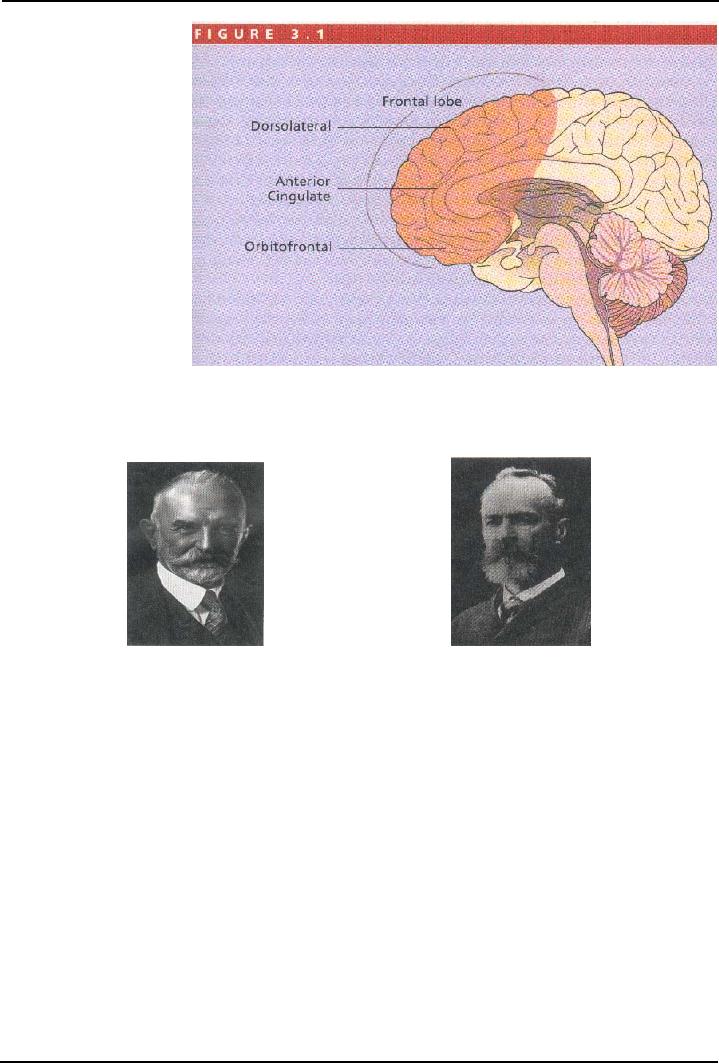 |
THE SELF:Meta Analysis, THE INTERNET, BRAIN-IMAGING TECHNIQUES |
| << CONDUCTING RESEARCH IN SOCIAL PSYCHOLOGY EXPERIMENTAL METHOD |
| THE SELF (CONTINUED):Development of Self awareness, SELF REGULATION >> |

Social
Psychology (PSY403)
VU
Lesson
09
THE
SELF
Aims
Introducing
the concept of the self as the subject
and object of
awareness
Objective
1
Describe
other methods of research in social
psychology and reviewing part I of
Social Psychology
syllabus
Main
Objectives of this
lecture
Discussing
the self as both target of
attention and active agent
Discuss
types of self awareness
Link
to previous lecture # 8
The
previous 6 lectures focused on conducting
social psychology research.. Although
all the main topics
including
primary research methods
including observational, correlational,
and experimental methods
were
discussed,
a few more research methods
relying on emerging technologies
will be discussed in
the
beginning
of lecture # 9. The highlights of
lecture # 9 are given below
followed by some description
on
other
research methods used in social
research.
Other
Research Methods used in
Social Research
Meta
Analysis
The
findings from a single study
are far less convincing
than the findings from a
series of related
studies.
This
is why researchers are so interested in
replication,
which
involves repeating a study
using different
participants
in an attempt to duplicate previous
findings. To rely on more sophisticated
comparison
procedures
when dealing with
contradictory findings-from replication
studies, researchers now
use
techniques
called meta-analysis (Hall &
Brannick, 2002).
Meta-analysis
is
a statistical technique to
determine
whether specific variables have
important effects across many
studies. Meta-analysis is the
use
of
statistical techniques to sum up a body
of similar studies in order to
objectively estimate the
reliability
and
overall size of the
effect.
Social
Psychologists Are Increasingly
Using Emerging Technologies in
Their Research
In
addition
to using more powerful statistical
techniques, an increasing number of social psychologists
are
employing
new technologies in their
study of social
interaction.
1.
VIRTUAL ENVIRONMENT
TECHNOLOGY
Recently,
some social psychologists believe
they have found a possible remedy to the
dilemma of choosing
between
greater control and greater realism in
experiments (Blascovich, 2003). They
recommend using
virtual
environment technology, in which
they create a virtual
research environment using a
computer.
Virtual
environment technology creates a
virtual research environment
using a computer.
2.
THE INTERNET
The
Internet is a relatively new
medium for communication, and
many social psychologists are
employing
it
as an avenue to collect data. One of the
biggest advantages in using the
Internet is that researchers
can
recruit
participants from the entire
world and test them remotely
(Birnbaum, 2004). This
technology has
greatly
facilitated the ability of social psychologists to
conduct cross-cultural research. For
example, in a
series
of Internet experiments on social
exclusion, Kipling Williams and
his colleagues (2000)
collected
data
from more than 1,500
participants from over sixty
countries. Other advantages of the
Internet as a data
collection
site are that studies can be
run without the presence of a
researcher, without the need
for large
laboratories,
without expensive equipment (except
access to a computer and an Internet
connection), and
without
limitations on the time of day in
which the data are
collected.
40

Social
Psychology (PSY403)
VU
Web-based
studies are not without
limitations. Obtaining a representative
sample is one of the primary
concerns
with Internet studies.
Another limitation of the Internet is
that researchers cannot guarantee
that
someone
hasn't-sent multiple copies of the
same data to them masquerading as
different participants.
3.
BRAIN-IMAGING
TECHNIQUES
In
the last decade, new technologies have
permitted us to peer deep
into the living brain,
providing
researchers
with a unique opportunity to understand
how social thinking and behavior
are associated with
neural
activity. Brain-imaging techniques
provide researchers with
measures of participants, neural
activity
while
they engage in various
tasks. The most commonly
used brain-imaging techniques
are:
The
electroencephalograph (EEC)
Computerized
axial tomography
(CAT)
Magnetic
resonance imaging
(MRI)
Positron-emission
tomography (PET)
Functional
magnetic resonance imaging
(fMRI).
------------------------------------------------------------------------------------------------------------
The
Self
Introduction
"No
topic is more interesting to people
than people. For most
people, moreover, the most
interesting is the
self
(Baumeister, The self in social
Psychology, 1999)
In
1999, the word "self"
appeared in 9269 book and
article summaries in Psychological
Abstracts.
Self
concept is person's answer to the
question "who I am"
Twenty
Statement Test (TST) by Kuhn
and McPartland (1954) has
been used to have an idea
about one's
self-concept.
Self-schemas
are beliefs about self
that organize and guide the
processing of self-relevant
information
Self-schemas
powerfully affect how we
process social information
The
Self Is a Symbol-Using, Self-Reflective,
Social Being
The
self is both a simple and a
complex concept. It is not a mental
construct located inside your
head--it is
you,
a social being with the ability to
engage in symbolic communication and
self-awareness. The
reason
the
word "social being" is sued
to define the self is because
selves develop in isolation,
but only do so
within
a social context (Baumeister & Twenge,
2003; Hardin, 2004).
Self-awareness
and symbol usage--and thus, the
self--may have evolved in our
ancestors as a means to
better
deal with an increasingly
complex social environment.
What
brain area accounts for
these remarkable cognitive
abilities? Neuroscientists have identified
the
frontal
lobes of the cerebral cortex as the primary
source (Heatherton et al.,
2004). The cerebral
cortex is
the
wrinkled-looking outer layer of
brain tissue that coordinates and
integrates all other brain
areas into a
fully
functioning unite. This is the brain's
"thinking" center, and it is much larger
in humans than in
other
animals.
The
frontal
lobes are
involved in the coordination of movement and
higher mental processes such
as
planning,
social skills, and abstract
thinking (Poldrack & Wagne
2004), and anterior cingulate of
frontal
lobe
is involved in self awareness
(see below).
41

Social
Psychology (PSY403)
VU
Most
influential
theorists
of the concept
of
self
The
most influential
contributors
to
our
understanding
of the self
were
two early social
theorists,
psychologist
William
James
and
sociologist
George
Herbert
Mead, and the
contemporary
self
theories
are based on the
insights
of them. In both
James's
and
Mead's
theories,
the self is
described
as having two
separate
aspects, the self
as
knower (the I) and the
self
as known (the me). The "I"
is the active perceiver, initiator, and
regulator of action; the "me" is
the
knowledge
one has about
oneself.
SEE GEORGE MEAD AND WILLIAM JAMES'S PICTURES BELOW:
WILLIAM JAMES'
GEORGE
MEAD
Types
of self awareness
Private
self awareness: It is temporary
state of being aware of
private, hidden self-aspects. We
are aware
of
our private self when we
looking ourselves in mirror, or become
aware of our stomach
cramps.
Public
awareness: Public is being
aware of public-self aspects. We
become aware of our public
self,
when,
e.g., we are being watched by others, or
our photograph is
taken.
Readings
Franzoi,
S.L. (2006). Social
Psychology. New
York: McGraw Hill. Chapter
3.
Lord,
C.G. (1997). Social
Psychology. Orlando:
Harcourt Brace and Company. Chapter
5.
42
Table of Contents:
- INTRODUCTION TO SOCIAL PSYCHOLOGY:Readings, Main Elements of Definitions
- INTRODUCTION TO SOCIAL PSYCHOLOGY:Social Psychology and Sociology
- CONDUCTING RESEARCH IN SOCIAL PSYCHOLOGY:Scientific Method
- CONDUCTING RESEARCH IN SOCIAL PSYCHOLOGY:Evaluate Ethics
- CONDUCTING RESEARCH IN SOCIAL PSYCHOLOGY RESEARCH PROCESS, DESIGNS AND METHODS (CONTINUED)
- CONDUCTING RESEARCH IN SOCIAL PSYCHOLOGY OBSERVATIONAL METHOD
- CONDUCTING RESEARCH IN SOCIAL PSYCHOLOGY CORRELATIONAL METHOD:
- CONDUCTING RESEARCH IN SOCIAL PSYCHOLOGY EXPERIMENTAL METHOD
- THE SELF:Meta Analysis, THE INTERNET, BRAIN-IMAGING TECHNIQUES
- THE SELF (CONTINUED):Development of Self awareness, SELF REGULATION
- THE SELF (CONTINUE…….):Journal Activity, POSSIBLE HISTORICAL EFFECTS
- THE SELF (CONTINUE……….):SELF-SCHEMAS, SELF-COMPLEXITY
- PERSON PERCEPTION:Impression Formation, Facial Expressions
- PERSON PERCEPTION (CONTINUE…..):GENDER SOCIALIZATION, Integrating Impressions
- PERSON PERCEPTION: WHEN PERSON PERCEPTION IS MOST CHALLENGING
- ATTRIBUTION:The locus of causality, Stability & Controllability
- ATTRIBUTION ERRORS:Biases in Attribution, Cultural differences
- SOCIAL COGNITION:We are categorizing creatures, Developing Schemas
- SOCIAL COGNITION (CONTINUE…….):Counterfactual Thinking, Confirmation bias
- ATTITUDES:Affective component, Behavioral component, Cognitive component
- ATTITUDE FORMATION:Classical conditioning, Subliminal conditioning
- ATTITUDE AND BEHAVIOR:Theory of planned behavior, Attitude strength
- ATTITUDE CHANGE:Factors affecting dissonance, Likeability
- ATTITUDE CHANGE (CONTINUE……….):Attitudinal Inoculation, Audience Variables
- PREJUDICE AND DISCRIMINATION:Activity on Cognitive Dissonance, Categorization
- PREJUDICE AND DISCRIMINATION (CONTINUE……….):Religion, Stereotype threat
- REDUCING PREJUDICE AND DISCRIMINATION:The contact hypothesis
- INTERPERSONAL ATTRACTION:Reasons for affiliation, Theory of Social exchange
- INTERPERSONAL ATTRACTION (CONTINUE……..):Physical attractiveness
- INTIMATE RELATIONSHIPS:Applied Social Psychology Lab
- SOCIAL INFLUENCE:Attachment styles & Friendship, SOCIAL INTERACTIONS
- SOCIAL INFLUENCE (CONTINE………):Normative influence, Informational influence
- SOCIAL INFLUENCE (CONTINUE……):Crimes of Obedience, Predictions
- AGGRESSION:Identifying Aggression, Instrumental aggression
- AGGRESSION (CONTINUE……):The Cognitive-Neo-associationist Model
- REDUCING AGGRESSION:Punishment, Incompatible response strategy
- PROSOCIAL BEHAVIOR:Types of Helping, Reciprocal helping, Norm of responsibility
- PROSOCIAL BEHAVIOR (CONTINUE………):Bystander Intervention, Diffusion of responsibility
- GROUP BEHAVIOR:Applied Social Psychology Lab, Basic Features of Groups
- GROUP BEHAVIOR (CONTINUE…………):Social Loafing, Deindividuation
- up Decision GROUP BEHAVIOR (CONTINUE……….):GroProcess, Group Polarization
- INTERPERSONAL POWER: LEADERSHIP, The Situational Perspective, Information power
- SOCIAL PSYCHOLOGY APPLIED: SOCIAL PSYCHOLOGY IN COURT
- SOCIAL PSYCHOLOGY APPLIED: SOCIAL PSYCHOLOGY IN CLINIC
- FINAL REVIEW:Social Psychology and related fields, History, Social cognition